The Bagpipe Society
The Rosca
*Photography by Pablo Carpintero and Alba Vázquez Carpenter *
Pablo Carpintero is an ethnomusicologist, musician, maker and researcher into Galician culture. A biologist by training, he has a PhD in science and was a professor of biochemistry at the University of Santiago. He has been a UNESCO consultant working for two years on the committee for Intangible Cultural Heritage and also in the Spanish Ministerio de Cultura committee for ICH. He is a member of the Association of Gaiteiros Galegos and directs a group who specialize in Galician musical traditions: A Requinta de Xian. His musical research on the evolution and repertoire of Galician bagpipes and instruments has led to the publication of a number of books www.consellodacultura.gal/asg/instrumentos/
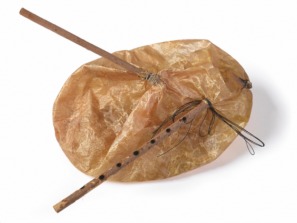
Introduction
Galicia forms the northwestern part of the Iberian Peninsula and due to the widely dispersed and naturally conservative, rural population, the traditional culture was preserved and remained alive until 1960s. For Galician people music is a very important activity and forms a strong factor in their social cohesion. For the last 25 years we have been conducting field work over all the Iberian north west peninsula, including the northern half of Portugal, Galicia, Asturias, north Zamora and Bierzo county. In Galicia alone we have interviewed and recorded the repertoire of 165 traditional bagpipers, and have established a deep relationship of learning and friendship with six of them. Likewise, 295 bagpipes constructed before 1940 (176 corresponding to Galician bagpipes), some of them used for centuries, were measured, photographed and their scales analysed. We have also learned to construct and play the bagpipes as well as other Galician musical instruments.
The Rosca
In 1988, as part of our search for traditional bagpipers, we visited Baixo Miño county in Pontevedra province which is near the Portuguese border. In the village of Cristelos we met Alfonso Álvarez Pousa, a 77 year old who, like a lot of traditional bagpipers, was a farmer and shepherd. Alfonso told us that as a young child, before playing the bagpipe he had begun playing a canelo, a six finger holed traverse reed flute that children from the southern half of Galicia used as beginner instrument. Sometime after, he built a gaita de vexiga (bladder pipe), a little bagpipe made with a pig’s bladder (fig. 1), where a cane (Arundo donax) or elder (Sambucus nigra) blowpipe and a cane or elder single reed pipe, with six fingerholes, were directly tied. This was the learning pathway for all traditional bagpipers from southern Galicia. Before having had an adult bagpipe, Alfonso told us that he had built another bagpipe, larger than the gaita de vexiga, which had a goatskin bag and an elder single reed pipe and he played this one when he was going to shepherd the sheep. After our interview, we asked Alfonso to build us a canelo and an elder reedpipe.
On our next visit some months later, Alfonso had built us a canelo and had found, in his house, the elder chanter of his shepherd bagpipe. We were very surprised because this chanter was not a normal elder reedpipe, it had a horn resonator at the lower end and a beautiful ring ornamentation (fig. 2). After seeing it, we spent the rest of the day only talking about this instrument.
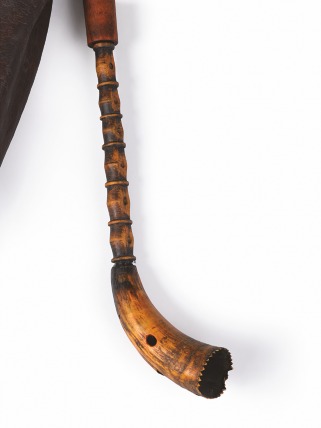
It was called rosca, a strange name because in Galicia gaita or pipa was the common name for all kinds of cylindrical or conical end-blown aerophones. Alfonso told us that roscas were a common musical instrument among Baixo Miño shepherds but it did not have a special repertoire; women’s songs or bagpipe pieces were used. They made it with a suitable 35cm x 20mm elder branch, carving the delicate rings and the barrel-shape inter-rings ornamentations using a knife. Such a barrel-shape carving was partially flattened to receive the fingerholes and to support the back thumbs. A cross design was carved on the lower thumb flat surface (fig. 3). Using a red hot iron rod, the natural internal bore was cleaned and slightly enlarged to about 7-8 mm about and then seven 5-6 mm fingerholes were burned between two rings: six on the front and one on the rear for the upper hand thumb, although this did not seem to be functional.
At the lower end a cow horn was added, with an edge teeth-shaped ornamentation and three non-tonal holes (fig. 4). To sound it, a 6-7cm cane or elder single reed, down-cut, was inserted at the upper end.
The rosca was played with an open fingering, sounding the tonic with all fingerholes covered. The roscas have these subtonic-free scales (deviations in cents):
| Degree | Tonic | 2º | 3º | 4º | 5º | 6º | 7º | 8º |
|---|---|---|---|---|---|---|---|---|
| Rosca nº1 | Do#-40 | Re+40 | Mi+30 | Fa#+20 | Sol#-20 | La#-20 | Do-20 | Do+10 |
| Rosca nº2 | Do# | Re#-20 | Mi+30 | Fa# | Sol#-30 | La#-20 | Do+20 | Do+30 |
As we can see from the above table, in opening the upper back thumbhole, we did not obtain an upper tonic and it is likely this hole was added as imitation of bagpipes chanters. In fact, Galician end-blown single reed pipes usually have only six front fingerholes, enough to play a complete scale from tonic to subtonic.
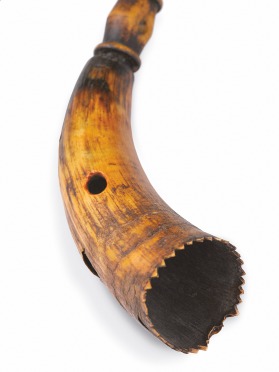
Interestingly, Alfonso told us that the rosca could be directly blown or played with a bag (fig. 5), shepherds called it a rosca in both cases. He explained that when the rosca was played with a bag, an elder blowpipe and two stocks were used, with all pieces ring-barrel-carved like the chanter (fig. 6). To avoid the reverse air flow, a little piece of leather was inserted at the lower blowpipe end.
Alfonso gave us the old rosca, and, on our third visit, another two were made for us. We arranged with him for our next visit that he would make the ring ornamented stocks and blowpipe, but unfortunately, Alfonso passed away before our meeting.
In the following years we searched for other people who had knowledge of the instrument but amongst all those interviewed only one remembered the rosca: Manuel Rodríguez Iglesias “O Caroco” from Veigadares, a 74 year old shepherd in 2003. Although his information was much less rich in detail than that of Alfonso, he confirmed the main features of rosca: the name, the ring ornamentation and the presence of a bell resonator. He even remembered that when there was no horn, a metallic funnel was added at the chanter lower end. Manuel told us that he always played the rosca without a bag.
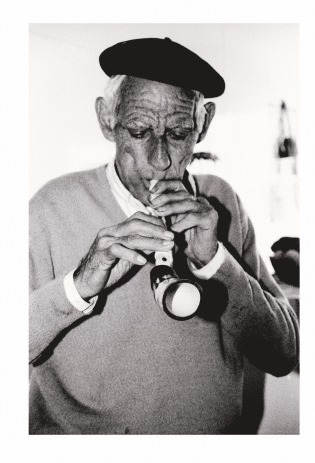
Alfonso and Manuel told us that the rosca was only played as a solo instrument by the shepherds, never in any kind of ensemble. Nevertheless, there was a special use of the instrument which occurred only at Christmas on 24th December and the 5th January. On these nights, a trio consisting of two male singers and a rosca player would tour the parish, from house to house, singing carols.
There are a number of rosca-related single reed pipes from Galicia and it will be useful to have knowledge of these. These are all end-blown:
The gaita or pipa de alcacén / avea, (rye/oat pipe) (fig. 7-1). When boys became interested in music, between 9-10 years old, they would make single-reed pipes by cutting some fingerholes in a dried or green rye (Secale cereal) or oat (Avena sativa) straw, and to make the fingerholes they used a knife making two cuts in the opposite direction. Initially, just three fingerholes were made but over time a six hole ryepipe was made which allowed more complex melodies to be played. In the northern half of Galicia boys added a second tube without fingerholes, which acted as a drone, tuning over the tonic (fig 7-2). Depending on the area, this second drone tube could be tied to the melody pipe with a thread (parallel pipes), or be held in a divergent position. In central counties we have documented ryepipes with two drones, tonic and fifth tuning (fig. 7-3); boys added, in its lower end, a short moveable cut straw which enabled it be tuned. There is no evidence that these instruments were played using circular breathing. The droned ryepipes and the cane flutes (pínfanos, canelos) were instruments used by children as learning instruments on their instrumental pathway to the bagpipe. The ryepipes and cane flutes were used in excluding areas with the Ulla river as border (see map). It is important to note that all 165 bagpipers we interviewed said that they had initially learnt to play on pipas de alcacén or pínfanos (canelos).
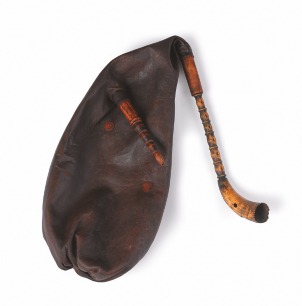
Gaita de cana, gaita de sabugueiro (reed pipe or elder pipe) (fig. 8.1). After the ryepipes, 10-12 year old boys constructed the same instrument using a narrow tube (approx 30 cm long x 10 mm wide) of dried elder (Sambucus nigra) or cane (Arundo donax or Phyllostachys aurea). These reedpipes with could have either an integral or external reed and usually had six fingerholes created with a hot red iron rod, but seven (for a superior tonic) and eight (for a subtonic and superior tonic) fingerholes were also common. In Bierzo county, Galician speaking León territory, we documented a variant made in elderwood, with a tied-on reed (heteroglotic), with eight square fingerholes. Likewise, in Amoeiro (northern Ourense) we found gaitas de cana with a second pipe playing a tonic drone. Again, there was no evidence of circular breathing used to play these instruments. Gaitas de cana and sabugueiro appear in almost all of Galicia, except in the eastern mountains range, where pipas de castiñeiro, double reed pipes made with chestnut bark, sometimes with a second long tube as drone (i.e. a double cylindrical oboe see fig. 12 below (new photo ), were used as learning instruments by children instead of single reed pipes.
Pipa. In Bierzo county, a Galician speaking territory in northwestern Leon province, we have found another interesting reedpipe (fig. 9) which shares some remarkable features with the rosca. There are differences as this pipa was made from turned walnut wood and the ornamentation has only two rings at the upper and lower ends with the areas between the fingerholes being perfectly flat and unadorned. Nevertheless, the cylindrical internal bore widened at the base like a bell, forming a evident resonator. This pipa had a single cane reed and eight fingerholes, seven on the front and one upper back hole. Interestingly, like the rosca, this pipa can be directly blown or placed in a bag.
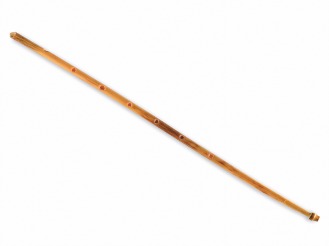
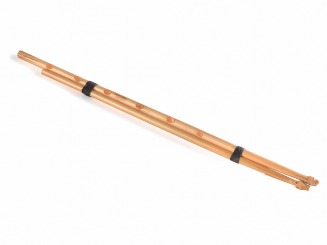
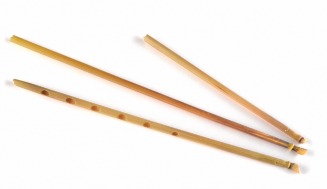
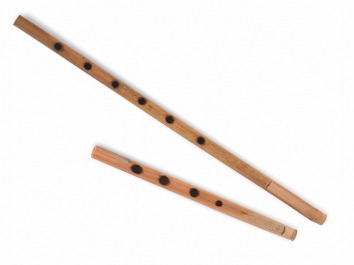
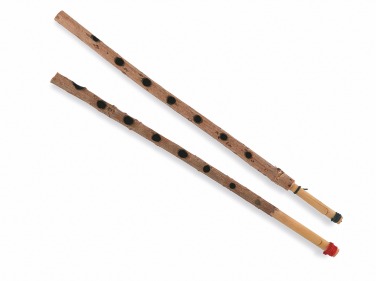
As we have already seen in the story of Alfonso, Galician children followed the same musical pathway – the would progress from directly blown reed pipes to single reed bagpipes or gaitas de vexiga (bladder pipes). This was the case especially in the southern Galician provinces of Pontevedra and Ourense, where the 10-14 years old boys added a bag to the single reed pipes. In many cases the size of the bag grew with the boys age: first, a dried pig’s bladder was used (fig. 1), then a rabbit or cat hide (fig.10) and, finally, a goat or dog skin was tanned to obtain a suitable bag (fig. 11). These bags were blown through a cane or elder blowpipe, to avoid the reverse air flow the tongue or a single reed, with a very thin tongue, was used. The chanter single reed pipe, with 6-8 fingerholes, was sometimes accompanied with a second single reed pipe drone tuned at chanter tonic or one octave below. All tubes could be directly tied to the bag or have small stocks. Sometime after playing this instrument, boys began to play an adult double reed chanter bagpipe, completing their “instrumental pathway”.
Having interviewed 165 traditional bagpipers, we found that boys who finally end up being bagpipers followed three different “learning chains” or “instrumental pathways” depending on the region:
In eastern mountains ranges, boys began with rye reedpipes, with double or single reeds and without fingerholes, followed with single rye reed pipes with fingerholes and later, pipas de castiñeiro, bark double reed pipes with six-eight fingerholes, some with a long drone, was used (fig. 12); after that, they were starting to play adult bagpipes.
Towards southern Ulla river, that is, approximately in Pontevedra province, boys started learning with canelos or pínfanos, cane transverse flutes with six fingerholes (fig. 13); later or simultaneously, they played on elder or cane single reed pipes. After a while, these reedpipes became a single reed bagpipe followed with an adult bagpipe. This was the Alfonso pathway, as we have already seen. This same chain, without pínfanos, has also been documented in Ourense province.
In the remainder of Galicia (approx. A Coruña and Lugo provinces), boys began with ryepipes or oatpipes (with double or single reeds) without fingerholes, then they put three fingerholes. After a while, double or triple droned ryepipes, with 6-8 fingerholes were played and, finally, they started to play adult bagpipe.

Other Iberian single reed pipes
In Iberia there is a small family of single reed bagless pipes, which have either horn or carved wood bell resonators, sometimes with ring ornamentations. These are obviously related to the rosca. The best known is, without a doubt, the Basque alboka (fig. 14): a double reedpipe with single reeds, played with circular breathing and furnished with a tooth ornamented horn bell, with all elements mounted on a wood yoke (García Matos M. 1956:131, Beltran J.M. 2004). Luis A. Payno has documented single reed pipes with horn or wood bell resonator in Cantabria, as the chiflas from Campoo (fig. 15-1) and Valdeolea (fig. 15-2), in Teruel province, as Alcaine and Bubágena gaitas (fig. 16), as well as in Guadalajara and north Burgos mountains ranges (fig. 17), this one is very similar to rosca. Likewise, Manuel Garcia Matos has found, in Madrid ranges, a square-shaped single reed pipe with a horn bell and ring ornamentation (fig. 18) (García Matos M. 1956:123), and he also found another single reed pipe, the turuta, in El Torno village, Cáceres province (fig. 19)(García-Matos, M.C. 1983:1). Southwards, now in Andalucia, there was the gaita in Gástor mountains of Cádiz province, a single reed hornpipe that shows the crossed ornamentation that we have already seen in rosca (fig. 20). Most of these single reed pipes were found at isolated mountains ranges.
*This ends the first part of the article. In the next edition Pablo will look at the medieval roots of rosca related bagpipes in Iberian medieval iconography, rosca ornamentation, archaeological finds dating from the Paleotlithic period and, using linguistics, he considers the earliest of origins of the rosca and, consequently, the very origins of the bagpipe itself. *
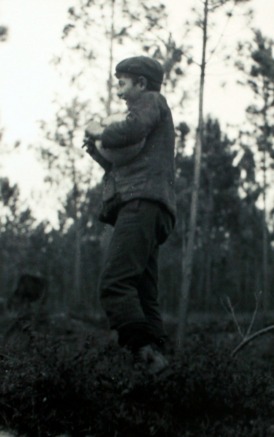
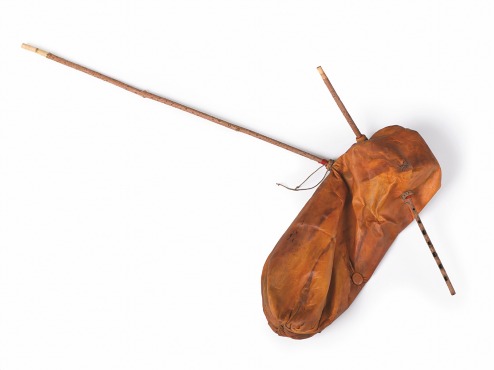
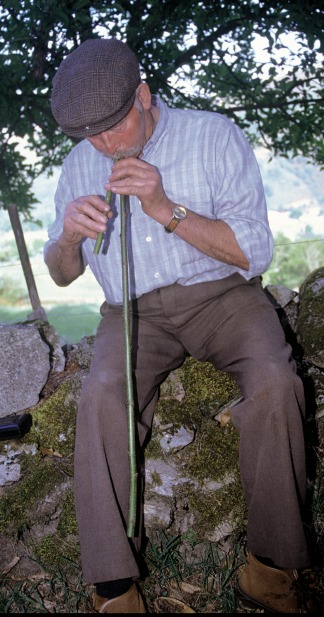
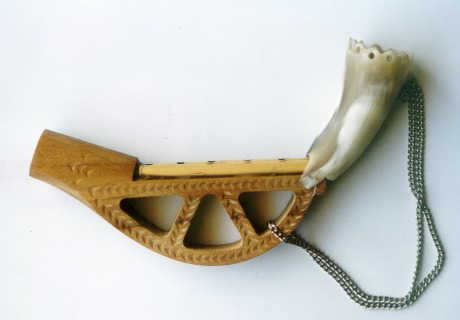
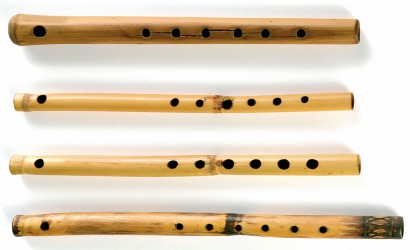
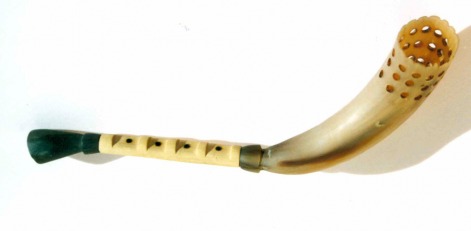
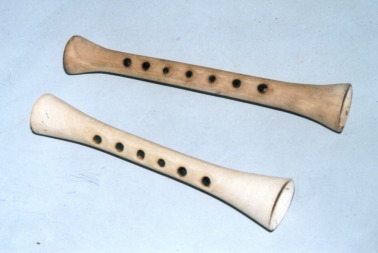
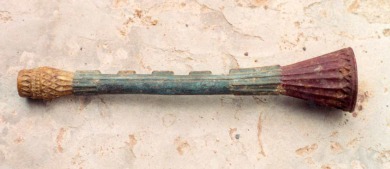
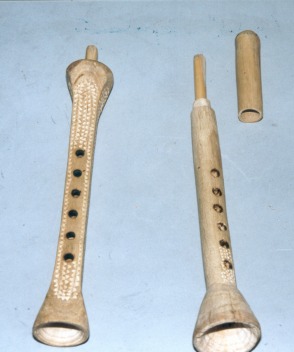
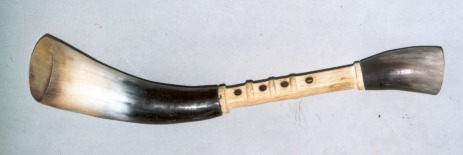
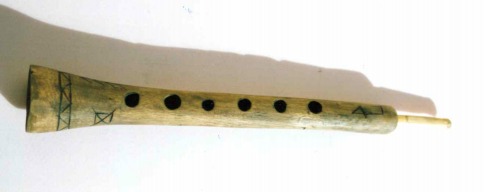
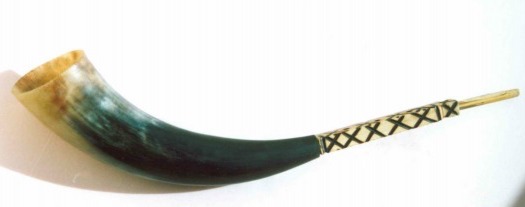
Bibliography (a full bibliograpy for all works relating to the complete article will be published in the next edition).
Beltran, J.M. (2004) Albokaren Alde Batzuk. Ed. Herri Musikaren Txokoa.
García Matos, M. (1956) “Instrumentos Musicales folklóricos de España. III. La “alboka” vasca”. Anuario Musical, pp. 123-144.
García-Matos, M.C. (1983) “La turuta, instrumento pastoril de un pueblo de Extremadura”. Revista de Musicología. Vol. VI, , nº 1-2, pp. 1-18
Acknowledgments: Many thanks to Jane Moulder for her contribution in editing this article. Luis A. Payno for the photos of the single reed pipes. For all the traditional Galician musicians who have transmitted their knowledge and experiences.
- Data Processing Notice (GDPR)
@BagpipeSociety on X (formally known as Twitter)
TheBagpipeSociety on Instagram
 BagpipeSociety on Facebook
BagpipeSociety on Facebook
Something wrong or missing from this page? Let us know!
